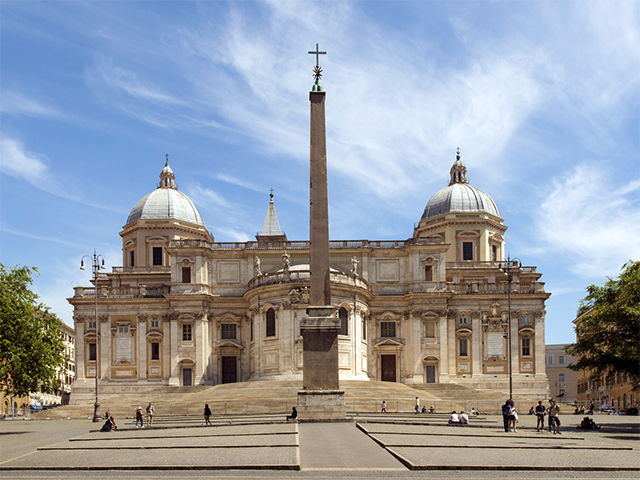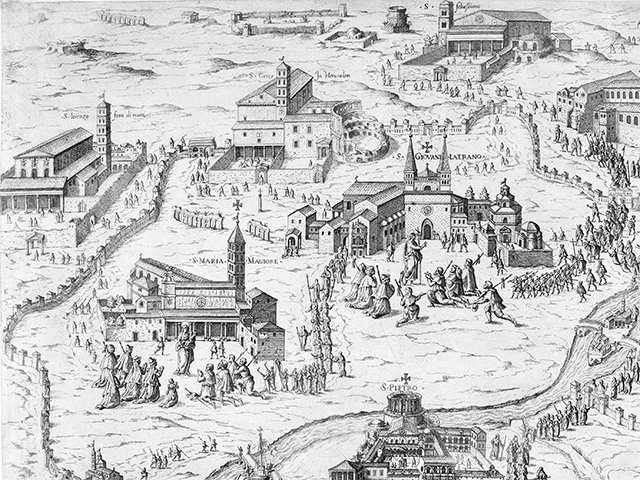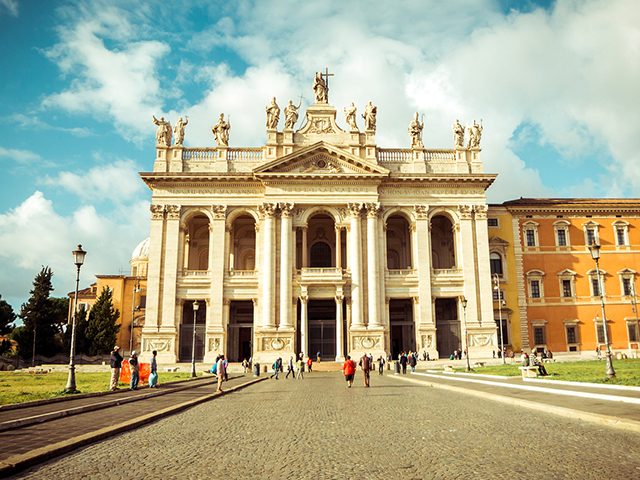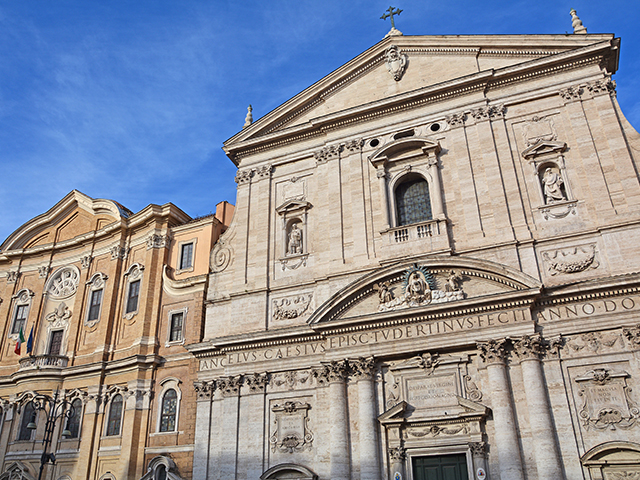Basilica of Saint Paul Outside the Walls
From the Tomb of the Saint to the portraits of the Popes. Here is what you can see in the Basilica of Saint Paul Outside the Walls: history, mass times and address.Imposing, elegant and majestic, the Basilica of Saint Paul outside the Walls is one of Rome's four papal basilicas, second in terms of size, only after the Basilica of St. Peter, in the Vatican City.
The church is located in Via Ostiense, at about 2 km outside the Aurelian Walls (after which the basilica is named). It is easily reachable exiting from Porta San Paolo close to the metro stop with the same name.
Built where Saul of Tarsus was buried, the basilica was destroyed in the fire of 1823 and rebuilt from 1826 thanks to the contributions of faithful from all around the world.
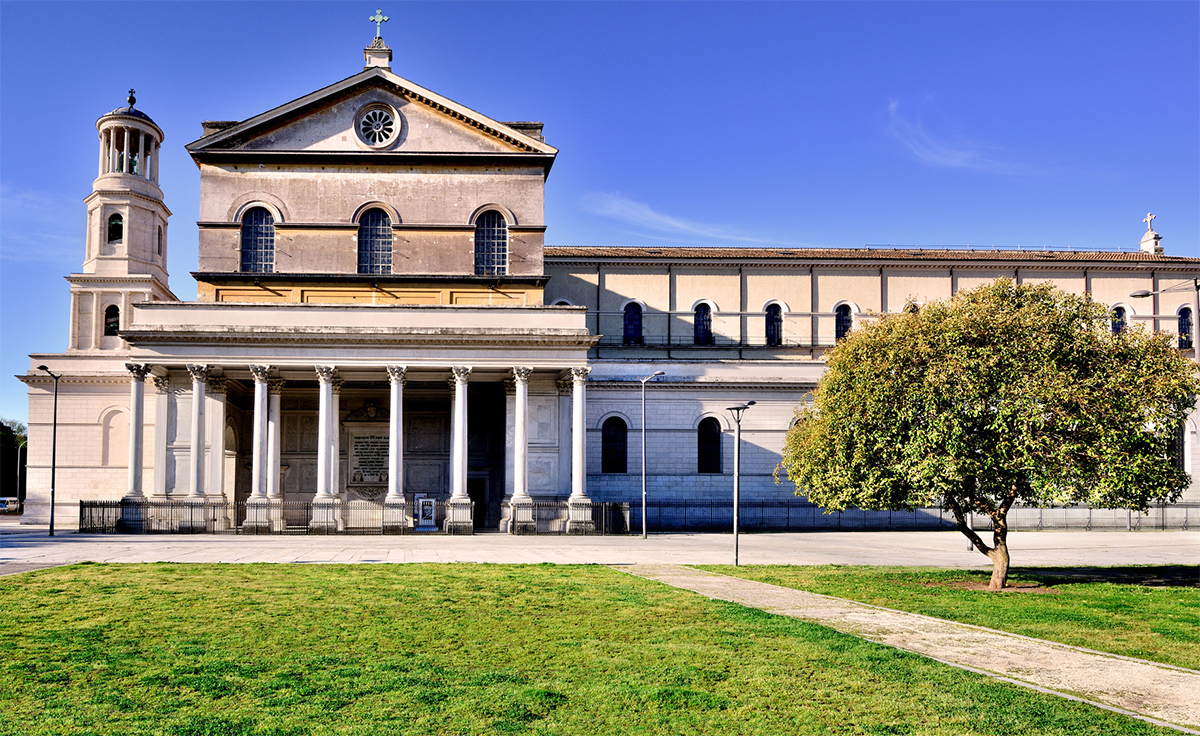
Basilica of Saint Paul Outside the Walls seen from the outside
Even if it is slightly out of the way compared to other monuments in the Capital, this wonderful church is worth a visit. But what is there to see in the Basilica of Saint Paul?
Continue reading this article and you'll find out something more about the history of this great church and about the important works of art contained in its interior.
BASILICA OF SAINT PAUL OUTSIDE THE WALLS: A LITTLE BIT OF HISTORY
Legend says that after being martyred, Paul was buried in a Roman necropolis not a long way from there, and his tomb became soon object of veneration. Over it was built a cella memoriae, that emperor Constantine transformed in a small basilica, consacrated in 324 by Pope Sylvester I.
The sarcophagus of Saint Paul can still be seen in the interior of the Basilica and during recent works a large window under the Papal Altar has been built, allowing the faithful to see the Tomb of the Apostle with the original engraved slab of the tomb.
The church gained its actual shape after the reconstructions by emperors Valentinian II, Theodosius and Arcadius, and it was afterwards reconsacrated again by Pope Siricius in 390.
Between the thirteenth and fifteenth centuries, the basilica started to house a number of works of art, but it was severely damaged by a fire in 1823. Pope Leon XIII appointed a commission to rebuild it, following the same dimensions and plan of the previous temple.
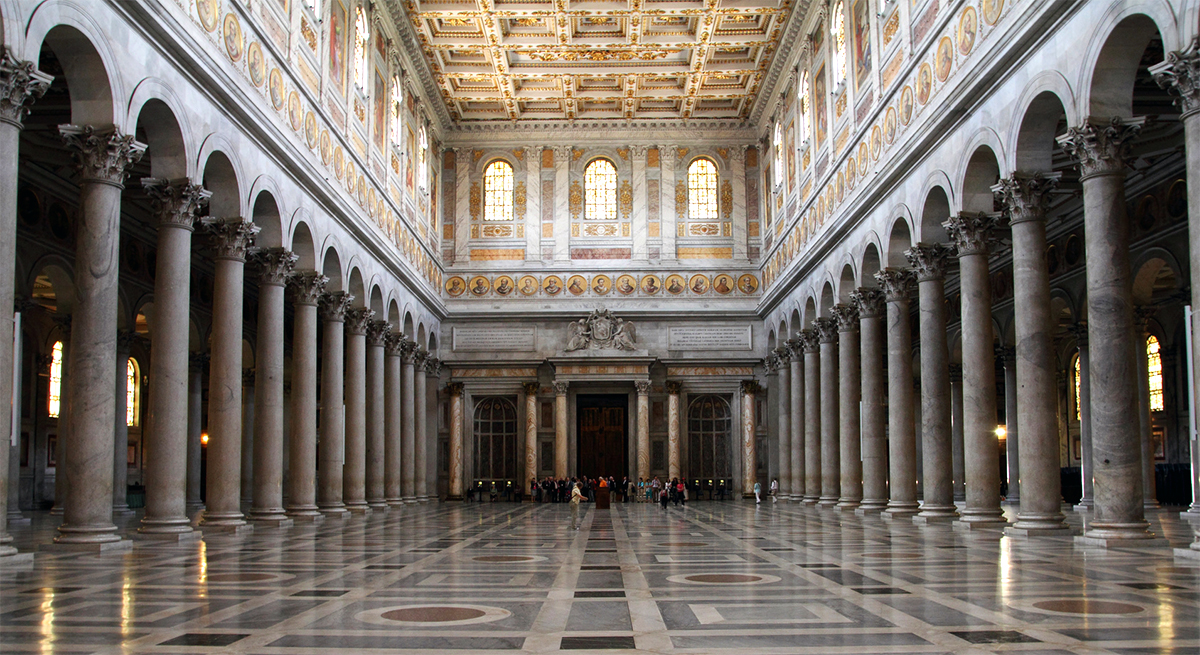
Basilica of Saint Paul outside the Walls - Interior nave
BASILICA OF SAINT PAUL OUTSIDE THE WALLS: THE QUADRIPORTICO
To enter the basilica you have two options: north, through the Gregorian Portico, in front of Parco Ildefonso Schuster, or West through the quadriportico. Here, surrounded by a wide colonnade, the imposing statue of Saint Paul, made with Carrara marble by Giuseppe Obici, will welcome you.
Built between 1890 and 1928 by Guglielmo Calderini following a project by Luigi Poletti, the portico presents a line of columns at the entrance, which is double at the sides and triple in the opposite side.
The side walls are decorated by medallions representing the twelve apostles and some disciples of Saint Paul. In the above fascia stand out the splendid nineteenth-century mosaics, work also by Luigi Poletti, author of other works like the bell tower and the pronaos on the northern side.

Basilica of Saint Paul outside the Walls - the quadriportico
BASILICA OF SAINT PAUL OUTSIDE THE WALLS: INSIDE
The interior is formed by five naves split by 80 granite monolithic columns. 130 meters long, 65 meters wide and 30 meters high: these are the imposing measurements of the basilica. Inside, you will suddenly feel very little!
The central altar is surmounted by the famous Gothic Ciborium by Arnolfo di Cambio (1285) and underneath is the tomb of the Saint. It is built with four red porphyry columns, supporting the roofing, ornated with statues and coloured mosaics. On the right side of the altar, there is the great candelabra for the Easter candle, built with marble by Nicola D’Angelo and Pietro Vassalletto in 1170.
The apsis is dominated by the majestic mosaic commissioned by Pope Innocence III, completed under the papacy of Pope Honorius III. In the center, there is the figure of the Redeemer represente in the act of benediction, with the book of the Gospel opened in his left hand. On the sides are Saint Peter and Saint Paul, next to saints Andrew the Apostle and Luke the Evangelist.
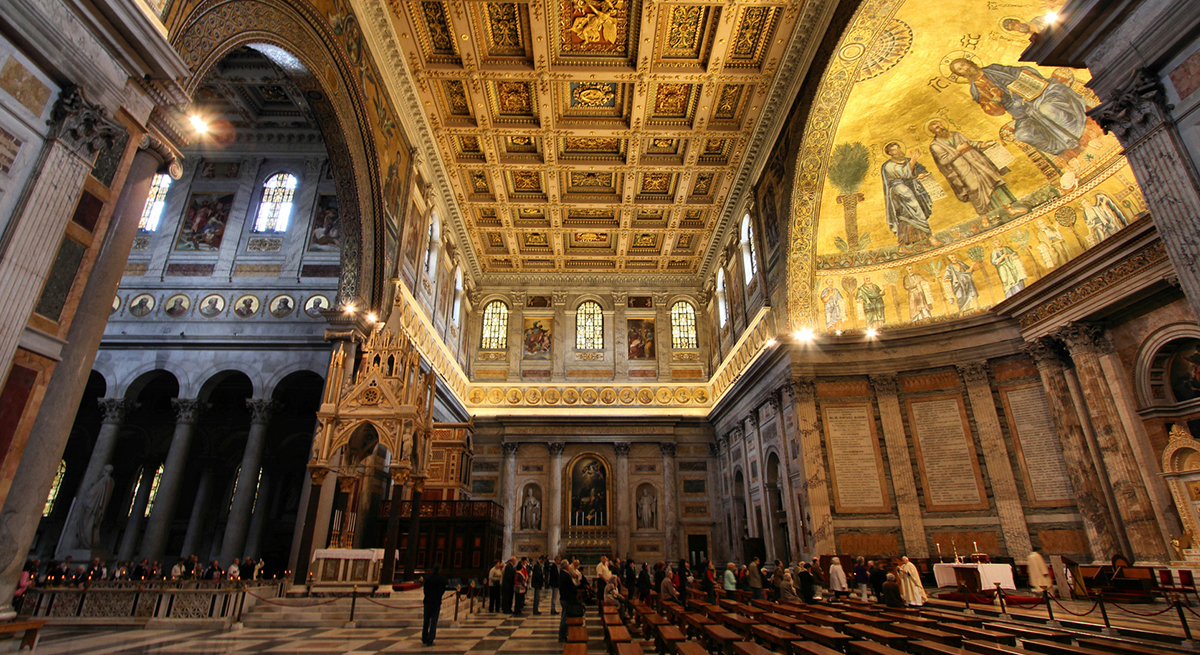
Basilica of Saint Paul outside the Walls - Transept, ciborium and apse
In the fascia immediately above the archs that divide the naves, there are some mosaics containing the portraits of all Popes, from Saint Peter to Pope Francis, who is nowadays the only one illuminated.
Built with a mosaic tecnique on a golden background, these portraits started in 1847 under the papacy of Pope Pius IX, but the idea has ancient roots, since they were already present in the old basilica.
Above the medallions, in the highest part of the central nave and the transept, are 36 frescoes, representing some scenes of the life of Saint Paul, also these comissioned by Pius IX, and completed in 1860.
BASILICA OF SAINT PAUL OUTSIDE THE WALLS: THE CLOISTER AND THE ART GALLERY
Visiting the Basilica is free, but there is an admission fee for the Cloister and the Art Gallery.
Inside, many works of art are exhibited, like sculptures, frescoes and sarcophagus dating back to Early Christian times: the ticket is certainly inexpensive (€4,00), so if you have some time to spend, we recommend to you to get in and don't think it twice.
In the Art Gallery, next to the sacristy, you will be able to admire prints by Piranesi, codes and the old bronze sides of the double door of the Basilica, as well as important fifeenth-century tables, paintings by Gaspare Traversi and lunettes by Lanfranco. Worth noting the oil painting Flagellation of Christ attributed to Bramantino.
In the wonderful cloister, on the other hand, are preserved many architectonical pieces from the old basilica and archeological remains from the close Ostiense necropolis. Among these, the sarcophagus of Pietro Leone ornated with scenes of the challenge and martyrdom of Marsyas.

Basilica of Saint Paul outside the Walls - Cloister
This cloister, also known as del Vassalletto is absolutely one of thirteenth-century Rome wonders and it represents the artistic peak of Cosmatesque work.
The four-sided space is formed by a series of four small double columns, all different from one another, some smooth, other fluted, supporting rounded arches, surmounted by a wonderful cornice ornated with mosaics.
A suitable place for meditation and study, where monks gather for prayer, seeking out peace and calm.
This article ends here! Now you only need to read the box below to find out about opening hours, prices and useful information and organize at best your visit to the Basilica. Enjoy your trip!
Useful information
Basilica of Saint Paul outside the Walls
- HOW TO GET THERE
- From the Port of Civitavecchia: Get to Civitavecchia Train Station and get on the first regional train bound for Rome. After about 50 minutes, get off directly at Roma Ostiense Station and from there, cross the underpass to metro station Piramide. Take the metro towards Laurentina (metro B) and get off after two stops at San Paolo Basilica. The Basilica is a stone's thrown away from there.*For train timetables refer to the official Trenitalia site.From Rome: If you are already in Rome, you will only have to get off at San Paolo Basilica (metro B), or take any of the following city bus lines: 770, 23, 271, 269.
- TIMETABLES
Basilica:
Open every day from 7.00 to 18.30
Cloister + Art Gallery + archeological area of the monastic garden
Open every day from 8.00 - 18.15Mass Times
Weekdays: 7.00 - 8.00 - 9.00 - 10.30 - 17.00 - 18.00 (Saturday only)
Holidays: 7.00 - 8.00 - 9.00 - 10.30 - 12.00 - 18.00*during the Holy Mass it is possible to visit the basilica.
- PRICES
Basilica:
Free admission.Cloister + Art Gallery + archeological area of the monastic garden
Admission: € 4.00 per person
Groups of at least 10 people: € 2.00 per person



 PORT MOBILITY CIVITAVECCHIA
PORT MOBILITY CIVITAVECCHIA









